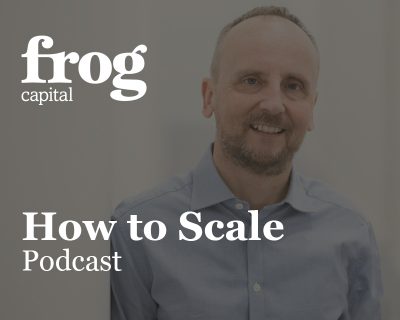Many entrepreneurs feel that they should keep the essence of the exciting business culture a company had as a start-up throughout its life. This is admirable to an extent but can allow nostalgia for a rose-tinted view of the early fun times getting in the way of sensible, appropriate business planning and structure as the business scales up.
Founders may view proper HR processes and people development programmes as very corporate and the antithesis of the entrepreneurial spirit but without them businesses easily fall into perceived cronyism and favouritism and don’t challenge the capability status quo, when in reality every growing business needs to be continually developing its skillset to keep up with new challenges.
Every role performed within a business is more effective if it is put in context of a Clear review structure:
(i) a clear business vision
(ii) a clear organisational structure
(iii) knowing how the role’s objectives fit into achieving higher level goals
(iv) knowing how success or failure is assessed at each level
(v) identifying individual development needs to improve chances of success
(vi) knowing that the Company is supportive in addressing development needs
Every individual should see that this is good for them, that it is applied consistently across the business, and importantly that no one is above being accountable for their contribution or in being expected to address shortcomings. For every one of a favoured group who loved the early freewheeling (unaccountable) days, there is probably at least one equally talented person who felt the business was clique ridden, unfair and failed them but their voices have not been heard; most likely because they left and it was attributed to “cultural differences”. Departures are often put down to poor recruitment when in reality it could have as much to do with poor organisational structure.
People asset management
The key “asset management” challenge for people is to address both the factors that are likely to drive high level job satisfaction and the different issues that create dissatisfaction. In Herzberg’s Two Factor Theory these two categories are Motivators (challenge, recognition, responsibility, sense of worth) and Hygiene Factors (job security, work environment, remuneration, benefits, company policy, supervision, relationship with their boss, relationships with peers). It is tempting to believe that the two factors apply to two distinct groups, the senior people and high flyers looking for motivation and the rest looking to just get on with fewer complaints, but in my experience they are very much interlinked.
In my CFO roles, I have always been responsible for HR and have learned enormously from the HR managers reporting to me; particularly as they tend to be the “agony aunt” of the business and hear the views that don’t percolate up the management hierarchy. A key message that comes through consistently is that however confidential you think your discussions are, everybody eventual knows pretty much everything and any decision made behind closed doors will be held up to workplace scrutiny. The worst position to be in is that you turn a blind eye to this and don’t think your decisions need to be justified, allowing the court of ill-informed public opinion to hold sway and drive dissatisfaction. My litmus test on any HR decision is always therefore how comfortable would I be standing up in front of the whole company (or indeed an employment Tribunal) to defend it.
What’s the risk?
Of course, individual discussions should not be made public but what you can do is have clear policies and guidelines for how decisions are made and ensure they are, and are seen to be, followed. Whilst it is tempting for a founder CEO to promote up an exceptional individual without due process because it is an obvious call and a fantastic surprise and motivation for that individual, the message to other staff can be that the decision was arbitrary, contrary to policy or good practice and therefore unfair.
An apparently generous act might well cause enough dissatisfaction amongst a larger group to more than offset the positive impact on the lucky and presumably motivated recipient. I have experienced the tension between motivation and hygiene many times in practice as my CEOs have naturally leant more towards driving motivation with big gestures whilst I manage the downside risk. The compromise is usually finding a way to make the apparently spontaneous, generous act conform to proper process by doing more preparation beforehand. Sitting behind this will be a robust performance management and appraisal process that can validate why certain individuals are rewarded and others are not, based on merit. It is also key to expectation management that the process is clear about development needs and more importantly that the business follows up to support addressing these needs in practical ways and then makes the hard decisions if this process is exhausted. There is nothing more demotivating to new employees than seeing someone who is not performing and effectively getting a free ride because they were there in the early days and part of company folklore.
Process drives better outcomes for all
Inexperienced managers, and most founders sit in this category, can easily fall into the trap of focusing on the supportive, encouraging, motivating (and enjoyable) part of performance management and skip the harder performance appraisal elements of identifying and communicating weaknesses and development needs and ultimately making tough decisions if there is no commitment to effective change. In the long term this is doing both the company and the individual a disservice as the chances of improvement are slim without acknowledgement of the issue and direction on rectification. Ultimately this can be classified as poor communication which might mislead an individual in their expectations meaning they will be de-motivated or leave when their unrealistic expectations are not realised. It is inexcusable in my book (not to say often costly) for someone to be dismissed for poor performance and not to see it coming, or know in advance what they needed to do to turn things around. This is the worst type of incompetent, inconsiderate communication by omission and in the context of the headline question, unacceptably poor asset management.
The CEO will normally set the tone for how people perceive what is acceptable within a company, especially in a small company, but these individuals do not necessarily get good feedback on their own actions. Without good company processes it is entirely possible for a workforce to be generally motivated but dissatisfied. The CEO will get the feedback on motivation and think they are doing all the right things but without a good HR function or someone who plays a similar role (e.g. a longstanding employee not in management but with a good open relationship with the CEO) they might not hear about the minor but consistent complaints that indicate growing dissatisfaction with the basic requirements. The CEOs motivational aura may protect them from personal criticism, which is aimed at “the company”, but the negative impact on company performance exists nonetheless.
Set the standard and live by it
As CEO of a growth stage company you need to set a good example to the senior managers, and indeed the whole company, in being accountable, open to feedback and committed to addressing development needs (for themselves and the company). This is perhaps demonstrating a degree of vulnerability that many founders and CEOs would not naturally want to show; starting and running a company requires a high degree of self-belief and the ability to instil confidence in others so most founders feel that anything that looks like self-doubt is to be avoided, especially in the early days. The essential development away from feeling they need to have all the answers is a journey that any founder who wishes to stay long term as CEO needs to go through and almost certainly they will need a good mentor or coach to get them there. Identifying the appropriate development approach required for each individual is a fundamental part of the asset management programme for your greatest asset. Engaging with this requirement as CEO sets the tone for an open, robust approach to people development that should be apparent throughout all levels of the company. Even CEOs will benefit from the review structure set out at the beginning of this blog.












